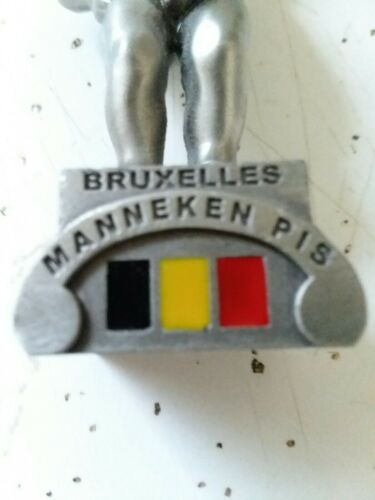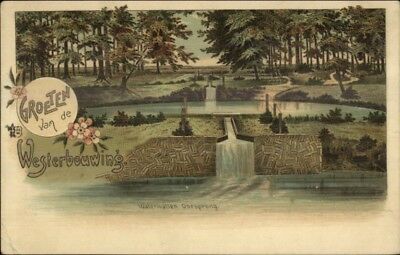-40%
Vintage 12 postcards 1945 Amersfoort Netherlands Medieval Buildings Historic
$ 76.55
- Description
- Size Guide
Description
Twelve postcards of paintings by Jaap V. in 1945. Eleven of the buildings were built in medieval times and are still in use today. The city of Amersfoort is a gem! The old city center has hundreds of historic buildings. My husband is Dutch, and we lived in the old center of Amersfoort in the early 1990s.Amersfoort, Netherlands, is a 30-minute train ride from Amsterdam. The name Amersfoort came from the Amers River, now called the Eem, and a ford, a shallow area in the river. Amersfoort was granted city rights in 1259 and built a defense wall and mote to protect itself from marauders in medieval times. The wall was finished by 1300. Amersfoort grew rapidly because of its location for shipping goods and clean water that flowed into the city. At one point there were 350 cottage industry breweries. The beer was low in alcohol, and everyone drank beer because it was safer than water.
By 1380 the city had outgrown the first wall, and they decided to build another wall, farther out. About 1450 the second wall and mote were completed. The first city wall was no longer needed, it was gradually taken down, and many of the original bricks were used to build homes on the location of the wall, so they are called muurhuisen, or wall houses.
Postcards: See labels on photos 2-4
Kamperbinnenpoort -- The only remaining water gate from the first wall, it was heavily damaged over the years and rebuilt. This view looks into the Langestraat, the main shopping street.
Kapelhuis -- Chapel House, at the corner of Krankeledenstraat and Lieve Vrouwe-Kerkhof is a Gothic house built around 1500.
Langegracht canal and Onze Lieve Vrouwentoren -- Langegracht is Long Canal. It was the location of many breweries in early days. Onze Lieve Vrouwentoren is Our Lady Tower that is in the center background.
Seven houses against St. Joriskerk -- It was the custom in early times to build against churches, the land was at a premium. The postcard shows Saint George church with seven buildings. The first one, on the corner of the Langestraat, was a pub for hundreds of years, In den Grooten Slock, the big gulp. They now have a cafe atmosphere.
Sint Joriskerk -- Saint George church, was built in many phases over centuries and the final stage finished in 1534. The largest square in the city, de Hof, is to the Southwest of the building. Smaller markets are to the Northeast, Groenmarkt, and Applemarkt.
‘t Sluisje Muurhuiz -- This is a wall house built around an old watchtower from the first wall. Plaster was used over many of the original brick walls. Over the centuries houses have been constructed, enlarged or destroyed. The wall houses vary in architectural styles.
‘t Latijnje Muurhuiz -- Another wall house, it is called by several names Plompe, Dieventoren, and Latijnje. Dieventoren is Thieves’ Tower, was the city jail, first mentioned in 1434 and used as a jail till 1862. Latijnje is the nickname because of the bell cupola that came from the demolished Latin school.
Onze Lieve Vrouwetoren -- translated to Our Loving Lady Tower but shortened to Our Lady's Tower, also called Lange Jan, Long John. It was the tower of a church built in 40 years between 1450 and 1500. The church that was with the tower was destroyed in 1787 by an explosion caused by gunpowder that had been stored there. The outline and pillar positions of the church are in the brickwork which is now a city square. The tower is 98 meters high and has a natural stone base that rests on a thick layer of cowhide. It is considered one of the Netherland’s most beautiful towers.
Onder de Linde -- Under the Lime Tree, 1530. This view is the Gothic stair-step gable side viewed from the Applemarkt. Jaap took artistic license when he painted the Our Lady Tower in the distance, an impossible view, the tower would be to the left. The most known view and main door to Onder de Linde is from the Groenmarkt street side which has the step gable more like Kapelhuis, Chapel House. Onder de Linde is three buildings and considered the oldest pub in Amersfoort.
Koppelpoort -- is the most famous of the water gates, built between 1380 and 1425 as part of the second wall. It was both water and land gate built as part of the second city wall. Initially, there were two land gates, one on either side of the river, only one remains, on the left. The gates were closed by large wooden doors, now gone. Two large treadmill wheels operated the wooden water gate to close off the river, think of hamster wheels but for six men in each. To raise and lower the gate was a dangerous job, all men in the wheels had to walk simultaneously to prevent falls that could be fatal to one or more of the men. Iron pins held the large wooden gate in place when it was open. To close the gate, the wheels must turn to raise the gate to pull out the pins. The weight of the gate made the closing easier but dangerous if it went too fast.
Monnikendam -- Monk’s Dam, is a water gate built for defense as part of the second city wall and finished about 1425. The Southeast side of the city had an unobstructed view of the countryside. Clean water flowed into the city, much needed for the beer breweries. When closed, the gate controlled the water level into the city. September 1992 on Monument Day, we toured many of the historic buildings when we lived in the center of the city. The story goes that there was a nunnery nearby that was frequented by a monk from the nearby monastery. This monk liked booze and nuns. He drowned near the dam, and that’s how the name Monk’s Dam came to be. Also, one of the two towers is said to be haunted by a witch.
Belgian Monument -- is a gift from the Belgians to the Netherlands, to thank them for sheltering Belgian refugees during the First World War. In the middle tower, there is a carillon, which is regularly played by students of the Amersfoort Carillonneur School.
==========
Amersfoort is dear to my heart. It’s rich history and preservation of the medieval structures makes it an amazing city to wander. These are just a few of the sites. When we returned from our 2018 visit, I decided to write a book about Amersfoort and the boulder story involving free beer and pretzels. It’s a story that wouldn’t die. Please visit our website JDimpressions.com for more information and to email me about when the book will be available.
Thank you for looking.
Donna













